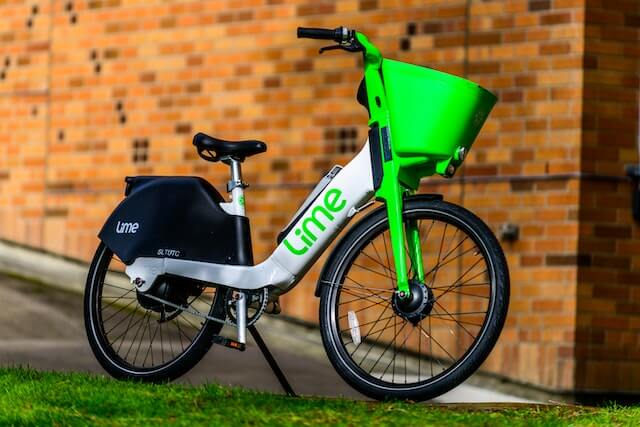Table of Contents
What is an Electric Bike?
An electric bike is going to play a very important role in this very fast-changing world.
As natural resources are reducing day by day, the reliability of renewable resources is increasing at a very fast pace.
As urbanization increases, road traffic became an integral part of a daily commuter.
According to a survey conducted by the U.S. Department of Transportation, half of all trips in the U.S.A. are three miles or less in length, a distance widely regarded as bikeable for most adults and even more feasible for electric bicycle riders.
Seventy-two per cent of those trips are currently made by cars and fewer than 2 per cent by bicycle.
So, from the above statement, you can realize how much scope is available with electric bikes.
Basically, the purpose of the electric bike is to replace car utilization for short distances in urban areas and use it for recreational activities.
But as the electric bike segment grows, the confusion around it also increases whether it is treated as a bicycle or motorcycle.
So, to remove this confusion the U.S. government made some rules to define the classification of these e-bikes.
Till now, these e-bikes are classified into three categories namely Class 1, Class 2, and Class 3.
The definition of these e-bikes is described as follows
An e-bike is defined as “a two- or three-wheeled cycle with fully operable pedals and an electric motor with less than 750 watts that provides propulsion assistance.”
746 Watts = 0.746 kW = 1 H.P. (Horse Power)
1Mile = 1.609 Kilometer
Class 1 electric bicycle
This means an electric bicycle equipped with a motor that helps only when the rider is pedaling, and that ceases to help when the bicycle reaches the speed of 20 miles per hour.
Class 2 electric bicycle
This means an electric bicycle equipped with a motor that may be used exclusively to propel the bicycle, and that is not capable of helping when the bicycle reaches the speed of 20 miles per hour.
Class 3 electric bicycle
This means an electric bicycle equipped with a motor that helps only when the rider is pedaling, and that ceases to help when the bicycle reaches the speed of 28 miles per hour.
As per law, the capacity of the motor was mentioned ‘less than 750 watts’ which was creating confusion among the manufacturers.
Because some manufacturers were making electric bikes with a 750-watt capacity.
So, it again cleared and mentioned as ‘not more than 750 watts’ motor capacity.
Anything above Class 1-3 would be treated as an electric moped or called a Class 4 electric bicycle (unofficially)
E-Bikes Classifications
Class 1 | 20 miles per hour | Pedal-Assisted
Class 2 | 20 miles per hour | Throttle & Pedal Assisted
Class 3 | 28 miles per hour | Pedal Assisted (Throttle optional)
Class 4 | 28 miles per hour and above | Motor Capacity above 750Watt
Class 1 e-bikes
![Only buy an electric bike [ if you know this] electric electra e-bike](https://ecofriendlyvahan.com/wp-content/uploads/2022/10/Class-1-e-bike_electra-electric.jpg)
Main Features of Class 1 e-Bikes
- Like regular bikes, it has the same area of access.
- The e-bike motor must be less than 750 watts.
- The motor does not assist without pedaling.
- The speed limit is 20 MPH (32.19 KMPH).
- It’s mandatory to be pedal-assisted.
Class 2 e-Bikes
![Only buy an electric bike [ if you know this] pexels erik mclean 8936922 1](https://ecofriendlyvahan.com/wp-content/uploads/2022/10/pexels-erik-mclean-8936922-1.jpg)
Class 2 e-Bikes have come with the pedal as well as throttle. These e-bikes propel with help of a motor and even you do not need to pedal it. The max speed of the class 2 e-bike is alike to class 1 e-bike with a speed limit of 20MPH. You can ride it as an “unassisted” bike i.e. with the motor off and in the same places.
Class 2 e-bikes generally look alike Class 1 e-bikes except for the inclusion of a throttle on the handlebar.
The main features of class 2 e-bikes
- The motor should be less than 750 Watts.
- The maximum speed limit is 20 MPH.
- Can assist even without pedaling.
- The throttle can be activated/deactivated through a trigger, button, or twist group.
- It may also have pedal assistance.
- It has the right to the same area of access as regular bikes.
Class 3 e-bike
![Only buy an electric bike [ if you know this] pexels bryce carithers 11823090 1](https://ecofriendlyvahan.com/wp-content/uploads/2022/10/pexels-bryce-carithers-11823090-1.jpg)
Class 3 e-bikes are bikes that have a maximum assisted speed limit of 28MPH (45.06 KMPH). It’s equipped with a motor of less than 750 Watts and ceases to assist when the speed limit reaches 28MPH along with throttle. It only assists when you are pedaling it. It’s the combination of features of both Class 1 & Class 2 e-bikes. It has a speedometer so that you can know the exact speed limit. You can’t ride it on bike paths that exist outside the roads. Some states don’t allow the assisted speed limit of 28MPH, so the manufacturers locked the speed to 20MPH, and you can unlock it where the law gives the permission to drive.
Main Features of Class 3 e-bikes
- It has pedal assistance.
- Motor engages only when you are pedaling.
- The Maximum assisted speed limit is 28MPH (45.06KMPH)
- Restricted from multi-use paths
- It comes with a throttle (optional) with a locked assisted speed limit of 20MPH.
- The age limit is applicable to riding it as per the laws of the state.
- The rider must be at least 14, 15, and 16 years old as per specific state law.
- The motor capacity must be less than 750 Watts.
- It comes with a speedometer.
Class 4 e-bike
![Only buy an electric bike [ if you know this] pexels gforce bike 13633041](https://ecofriendlyvahan.com/wp-content/uploads/2022/10/pexels-gforce-bike-13633041.jpg)
These are deemed motorized e-bikes which can’t be ridden on roads. Moreover, it should be insured and licensed. The power of the motor is more than 750 watts and assisted speed limit is more than 28MPH. This is an off-road e-bike.
Main Features of Class 4 e-bike
- It comes with throttle and/or pedals.
- The top speed is 28MPH and above.
- It needs registration, insurance, and a license.
- The power of the motor can be more than 750 watts.
Why is it called an e-bike or e-bicycle?
The e-bike or e-bicycle has some components in addition to the normal bicycle which falls under the electrical & electronics categories. So, what additional components could be?
- e-bike Motor
- e-bike Battery
- Electronic Circuit Plate
- Speedo meter
- Throttle
Conclusion
The e-bikes evolving continuously as urbanization expanding. So, it has a huge potential to grow in the coming years. The governments are also actively involved by making laws and giving more clarity to the manufacturers and users. The electric bike will play a pivotal role to reduce carbon footprints and making our earth planet a safer place to live. With the classification of these electric bikes, you can easily decide which bike you want by keeping budget in mind.

